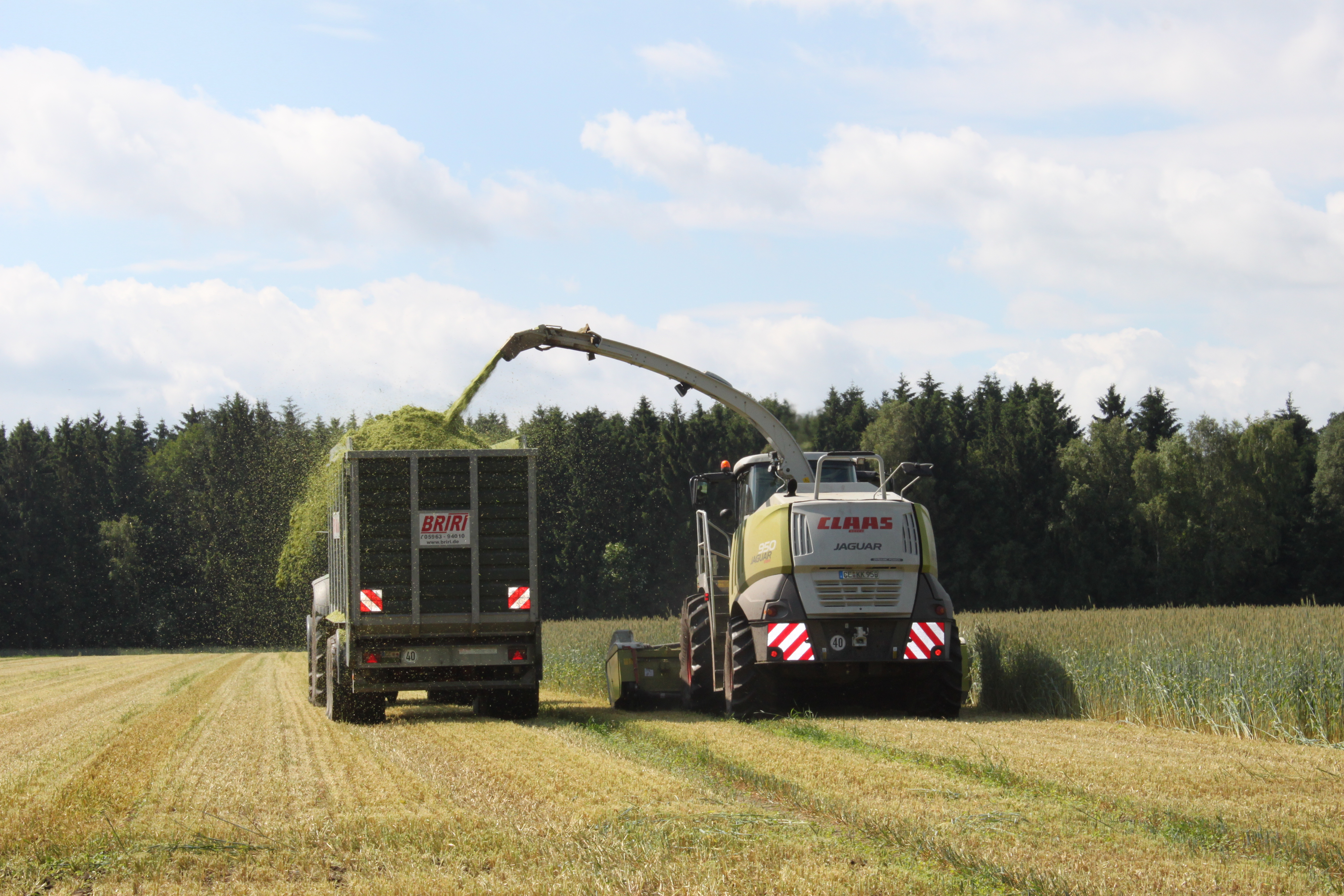WCS cereals have a firm place in biogas production
Reasons for the use of cereals in biogas production
- Implementation of greening guidelines by expanding crop rotation
- Winter revegetation
- Expansion of the recovery window for fermentation residues
- Breaking down work peaks in silage maize production
- Utilisation of technology, storage space and know-how
- Relief in cases of substrate shortages
- Sufficient time for optimal soil preparation for winter rape or rotation crop
- Active control of blackgrass due to dense plantings and early harvest
Besides the use of cereal grains for biogas production, the use of silage cereals is the most important utilisation form. Either as a main WCS cereal crop or through the cultivation of forage rye before a main crop. We have compared these two variants:
Comparison of WPS and FR
| WPS whole plant silage | FR forage rye | |
|---|---|---|
| Use as: | Main crop | Cultivation before a catch crop |
| Growth - special characteristics: | Highest mass yields in early summer | Early mass growth after winter |
| Harvest date: |
Milk-ripe to dough stage of maturity, direct chopping (30 - 35% DM) |
For heading, after swath deposition (18 - 25% DM) |
| Yield: | 8 - 15 t/ha TM | 4 - 6 t/ha TM |
Basically, all cereal types may be considered for use as whole plant silage. The cereal types differ in terms of their habitat demands, sowing and harvest date and yield potential:
- Winter barley: early harvest date, below-average yield potential
- Wheat: highest habitat demands, late crop, high yield potential
- Triticale: mid-range sowing and harvesting dates, high yield potential
- Rye: mid-range sowing and harvesting dates, lowest habitat demands, high yield potential
Comparison of sowing and ripening dates for various cereal types
| Sowing time | Silo readiness | |
| Winter barley | 15 September – 25 September | 29 May – 15 June |
| Winter rye | September 25 – October 10 | 8 June – 25 June |
| Winter triticale | September 25 – October 10 | 10 June – 20 June |
| Winter wheat | 1 October – 20 October | 15 June – 5 July |
Average dates from field trials in Bavaria 2008 - 2011 (Lfl Bayern [Bavarian State Agricultural Institute], 2014)
Because of its low habitat demands and low production costs in combination with a high yield potential, hybrid rye is especially suitable for cultivation as WCS cereal.
What are the advantages of hybrid rye?
- Low site requirements
- High winter hardiness
- Low water requirement
- High nitrogen efficiency
- Low pesticide use requirement
- Efficient root system
- Early mass development
- Long grain filling phase
The optimal harvesting period for GPS cereals is in the milk-ripe to dough stage of maturity, with DM contents of 30 – 35%. In the case of an early harvest date, yield and energy from grain filling are sacrificed, and in the case of a later harvest, the indigestible fraction (lignin) increases due to plant ripening. In both cases the gas yield and silage quality are reduced.
DM content and gas yields at different stages of maturity in the cereals
| Maturity stage | Harvest date | DM content | Gas yield m³/t FM |
| Awn tips | Early May | <16% | <100 |
| Flowering | Early June | 20 - 25% | 130 - 160 |
| Milk development | Mid June | 30 - 35% | 170 - 250 |
| Dough stage of maturity | End of June | 35 - 40% | up to 250 |
IBS, Bremen, 2006
What factors influence silage quality?
- Harvest date (maturity/ripening/dry mass)
- Weather conditions
- Variety
- Harvesting technique employed (chop length)
- Logistics (forage harvester, milling)
- Compaction
- Use of silage aids
- Silo coverage
- Storage time of silage before opening
- Infeed
- Removal technique
- Silo management, general
Hybrid rye is especially preferable due to its unexacting habitat demands and low production costs in combination with a high yield potential.



